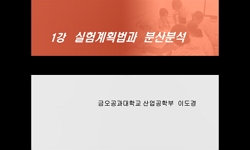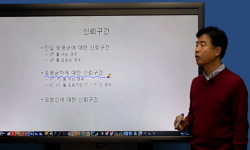본 연구는 시내버스 서비스 수준을 의미하는 노선별 차량 운행대수의 영향을 미치는 운행여건과 상관성 분석에 관한 연구이다. 분석방법은 회귀분석방법을 적용하였으며, 분석대상은 울산...
http://chineseinput.net/에서 pinyin(병음)방식으로 중국어를 변환할 수 있습니다.
변환된 중국어를 복사하여 사용하시면 됩니다.
- 中文 을 입력하시려면 zhongwen을 입력하시고 space를누르시면됩니다.
- 北京 을 입력하시려면 beijing을 입력하시고 space를 누르시면 됩니다.

시내버스 운행여건과 서비스 수준에 관한 연구 - 울산광역시 사례를 중심으로 - = A Study on the Relationship between Bus Operation Environment and Level of Service of Intra-City Bus - In the place of Ulsan Metropolitan Area -
한글로보기https://www.riss.kr/link?id=A101809938
-
저자
김범룡 (울산지방경찰청 경비교통과 교통안전계) ; 최양원 (영산대학교) ; Kim, Beom-Ryong ; Choi, Yang-Won

- 발행기관
- 학술지명
- 권호사항
-
발행연도
2015
-
작성언어
Korean
- 주제어
-
등재정보
KCI등재
-
자료형태
학술저널
- 발행기관 URL
-
수록면
1309-1320(12쪽)
-
KCI 피인용횟수
2
- DOI식별코드
- 제공처
- 소장기관
-
0
상세조회 -
0
다운로드
부가정보
국문 초록 (Abstract)
본 연구는 시내버스 서비스 수준을 의미하는 노선별 차량 운행대수의 영향을 미치는 운행여건과 상관성 분석에 관한 연구이다. 분석방법은 회귀분석방법을 적용하였으며, 분석대상은 울산시 2013년 기준 98개 노선으로 한정하였다. 상관성분석을 위한 모형 도출을 위해 먼저 상관분석을 실시하여 종속변수인 운행대수와 독립변수인 운행거리, 운송수입금, 운송원가간의 관계를 분석한 결과, 아주 높은 유의수분에서 상관성이 있는 것으로 확인되었다. 회귀분석은 모형을 3가지 유형으로 구분하여 실시하였으며, 그 결과는 다음과 같다. 첫 번째 울산시 98개 버스노선 전체를 대상으로 도출한 모형은 Y(운행대수)=$-4.532+0.00002877*X_1$(운송수입금)인데, 이 의미는 운행대수 1대 증차를 위한 필요조건은 1일 승객 수가 140명 정도 증가하여야 시행할 수 있다는 점을 알려준다. 두 번째는 일반형, 좌석형, 중형으로 구분되는 버스 운행형태별 모형은 일반형의 경우 Y(운행대수)=$-10.954+0.00004283*X_1$(운송수입금), 일반형 시내버스를 1대 증차하기 위해서는 1일 승객 수가 약 153명 정도 증가되어야 시행할 수 있음을 보여주며, 중형의 모형은 Y(운행대수)=$-0.859+0.00001438*X_1$(운송수입금)인데, 이 의미는 1일 승객 수가 약 52명 정도 증가되어야 시행 가능함을 보여준다. 세 번째는 버스노선 운행체계별 모형 분석의 경우, 공동배차제의 경우 Y(운송대수)=$-4.786+0.00003028*X_1$(운송수입금)인데, 이 의미는 운행대수 1대 증차를 위한 필요조건은 1일 승객 수가 약 140명 정도 증가해야만 시행할 수 있으며, 개별노선제의 경우 Y(운행대수)=$-2.339+0.00002030*X_1$(운송수입금)인데, 이 의미는 운행대수 1대 증차를 위한 필요조건은 1일 승객수가 약 140명 정도 증가되어야 시행할 수 있음을 보여준다. 따라서 버스노선 운영체계별로 모형을 도출하여 운영체계가 시내버스 노선별 차량 운행대수에 미치는 영향을 분석한 결과, 두 가지 운영체계 모두 차량 증차를 위한 추진할 경우, 1일 승객 수가 140명 정도는 확보되어야 한다는 공통적인 결론에 도달되었으며, 노선운영체계 특성에 따른 노선별 차량 운영대수 차이는 거의 없는 것으로 분석되었다.
다국어 초록 (Multilingual Abstract)
This study made an attempt to analyse the relationship between operation environment and fleet size per route which represents the level of service for inner-city bus service. Regression analysis method has been adopted as main analysis tool and 98 ro...
This study made an attempt to analyse the relationship between operation environment and fleet size per route which represents the level of service for inner-city bus service. Regression analysis method has been adopted as main analysis tool and 98 routes of bus operation status in Ulsan city as of 2013 has also been selected for analysis target. Correlation analysis was performed to identify the relationship between dependent and independent variables. There are three types of model for whole sample, type operation, and bus route operation system. These are the results of the current study. 1. The model developed for whole sample of 98 routes is as follows. Y(Fleet Size)=$-4.532+0.00002877*X_1$(Revenue). This model shows that it is necessary to have more than 140 passengers per day to increase fleet size of each bus route in Ulsan. 2. Models developed by type of operation (which are standard, express, and middle sized) are shown below. Stand Bus : Y(Fleet Size)=$-10.954+0.00004283*X_1$(Revenue). It is identified that more than 153 passengers need to use standard bus to increase fleet size per each standard bus, Middle Sized Bus : Y(Fleet Size)=-0.859+0.00001438*X1(Revenue). For middle sized bus, at least 52 daily passengers are needed to increase number of bus in each route. 3. Models developed for each route operation systems are as belows. Joint Operation Group : Y(Fleet Size)=$-4.786+0.00003028*X_1$(Revenue). Individual Operation Group : Y(Fleet Size)=$-2.339+0.00002030*X_1$(Revenue). These model provide similar result which 140 people is the minimum number of passenger to raise the number of vehicles in each route. This result shows that the route operation systems does not affect the raise number of cars significantly.
참고문헌 (Reference)
1 김점산, "시내버스업체의 경영 및 서비스 평가제도 도입 효과분석" 대한교통학회 25 (25): 43-55, 2007
2 정병두, "버스 재정지원체계 변화가 버스노선 효율성에 미치는 영향 분석" 대한토목학회 33 (33): 2455-2464, 2013
3 Attah, K. Boame, "The technical efficiency of Canadian urban transit systems" 40 (40): 401-416, 2004
4 Oh, M. Y., "Analyzing efficiency in the seoul's urban bus industry data envelopment analysis" 20 (20): 59-68, 2002
5 Jo, G. S., "An Analysis of the Effect of Government Subsidy Scheme to Bus Industry" Korea Research Institute of Transportation Industries 2009
6 Cowie, J, "Acquisition, efficiency and scale economies : an analysis of the British bus industry" 22 (22): 147-157, 2002
1 김점산, "시내버스업체의 경영 및 서비스 평가제도 도입 효과분석" 대한교통학회 25 (25): 43-55, 2007
2 정병두, "버스 재정지원체계 변화가 버스노선 효율성에 미치는 영향 분석" 대한토목학회 33 (33): 2455-2464, 2013
3 Attah, K. Boame, "The technical efficiency of Canadian urban transit systems" 40 (40): 401-416, 2004
4 Oh, M. Y., "Analyzing efficiency in the seoul's urban bus industry data envelopment analysis" 20 (20): 59-68, 2002
5 Jo, G. S., "An Analysis of the Effect of Government Subsidy Scheme to Bus Industry" Korea Research Institute of Transportation Industries 2009
6 Cowie, J, "Acquisition, efficiency and scale economies : an analysis of the British bus industry" 22 (22): 147-157, 2002
동일학술지(권/호) 다른 논문
-
- 대한토목학회
- 장선우
- 2015
- KCI등재
-
선행함수지수를 고려한 강우강도-지속시간-홍수량(IDQ) 곡선기반의 홍수예경보기법
- 대한토목학회
- 김진겸
- 2015
- KCI등재
-
- 대한토목학회
- 홍종우
- 2015
- KCI등재
-
우리나라의 지역 가뭄 평가를 위한 MODIS DSI 활용
- 대한토목학회
- 박혜선
- 2015
- KCI등재
분석정보
인용정보 인용지수 설명보기
학술지 이력
| 연월일 | 이력구분 | 이력상세 | 등재구분 |
|---|---|---|---|
| 2022 | 평가예정 | 계속평가 신청대상 (등재유지) | |
| 2017-01-01 | 평가 | 우수등재학술지 선정 (계속평가) | |
| 2013-01-01 | 평가 | 등재학술지 유지 (등재유지) |  |
| 2010-01-01 | 평가 | 등재학술지 유지 (등재유지) |  |
| 2008-01-01 | 평가 | 등재학술지 유지 (등재유지) |  |
| 2006-01-01 | 평가 | 등재학술지 유지 (등재유지) |  |
| 2004-01-01 | 평가 | 등재학술지 유지 (등재유지) |  |
| 2001-07-01 | 평가 | 등재학술지 선정 (등재후보2차) |  |
| 1998-07-01 | 평가 | 등재후보학술지 선정 (신규평가) |  |
학술지 인용정보
| 기준연도 | WOS-KCI 통합IF(2년) | KCIF(2년) | KCIF(3년) |
|---|---|---|---|
| 2016 | 0.4 | 0.4 | 0.41 |
| KCIF(4년) | KCIF(5년) | 중심성지수(3년) | 즉시성지수 |
| 0.38 | 0.35 | 0.707 | 0.11 |




 ScienceON
ScienceON







